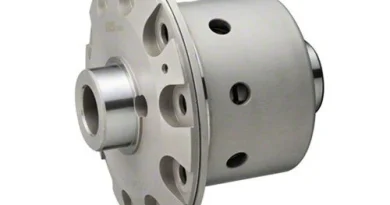Uncovering LCGXPM Smalls: Everything You Need to Know
Introduction
The term “LCGXPM Smalls” has been generating curiosity across various sectors, from technology enthusiasts to product developers. This article aims to provide a clear understanding of what LCGXPM Smalls means, its applications, and why it’s gaining attention. By diving into its origins, uses, and industry impact, we’ll offer insights to help readers grasp the significance of LCGXPM Smalls and its role today.
1. What is LCGXPM Smalls?
The term “LCGXPM Smalls” refers to a unique concept or product within its specific industry, though its precise definition may vary depending on the context. It’s often associated with small-scale models, components, or systems that carry the acronym “LCGXPM.” Many speculate it may relate to compact tech devices, miniature components, or experimental prototypes.
Origin of the Term
While the exact origin of LCGXPM Smalls remains somewhat mysterious, it likely developed from a blend of technical jargon and industry-specific terms. “LCGXPM” could signify a category or a design approach, while “Smalls” denotes a focus on miniaturization or precision.
2. Applications of LCGXPM Smalls
LCGXPM Smalls has applications across various fields, from manufacturing to consumer electronics. Here are some of the primary ways it’s utilized:
- Consumer Electronics: Miniature components that fit into devices without sacrificing functionality.
- Manufacturing: Compact machine parts that streamline processes in tight spaces.
- Experimental Prototypes: Smaller-scale versions of products for testing new concepts.
Examples of LCGXPM Smalls in Use
- Miniature Sensors: Used in smartphones and wearable devices to conserve space while providing robust functionality.
- Precision Machinery Parts: Ideal for equipment that requires compact, highly precise components.
- Prototype Systems: Small models used in research to explore design efficiency and usability.
3. Benefits of LCGXPM Smalls
LCGXPM Smalls presents a range of benefits, especially in industries where compactness and efficiency are valued. Here are some key advantages:
- Space Efficiency: Small components allow for more streamlined designs.
- Energy Conservation: Smaller systems can often operate on less power.
- Flexibility: Ideal for applications that require flexibility in design without compromising on quality.
The Role of Miniaturization in Modern Design
Miniaturization has become a priority in modern design. Consumers and industries alike value products that combine functionality with a small form factor, allowing for versatile applications.
4. Industry Impact of LCGXPM Smalls
The concept of LCGXPM Smalls is impacting various industries, pushing advancements in product design, testing, and scalability. By enabling more efficient designs, it’s possible to create products that are not only compact but also highly effective.
Key Industries Embracing LCGXPM Smalls
- Tech Industry: Small-scale tech components are foundational to modern electronics.
- Automotive: Compact parts help in reducing vehicle weight and improving efficiency.
- Medical Devices: Miniaturized components are essential for portable, non-invasive devices.
5. Challenges and Considerations
Despite its benefits, LCGXPM Smalls also poses certain challenges:
- Manufacturing Precision: Producing small parts with high precision can be complex.
- Durability: Miniature components may require specialized materials to withstand wear and tear.
- Cost: Advanced manufacturing techniques can increase production costs.
Overcoming Challenges in LCGXPM Smalls
Technological advancements continue to reduce these challenges. By investing in precise manufacturing methods and exploring new materials, industries can overcome the barriers associated with LCGXPM Smalls.
6. Future of LCGXPM Smalls
The demand for compact, efficient components is expected to grow. With a focus on smart technologies, sustainable design, and versatile applications, LCGXPM Smalls is likely to influence future innovations in multiple sectors.
Predicted Trends for LCGXPM Smalls
- Improved Materials: Lightweight, durable materials will enhance the resilience of small components.
- Enhanced Precision: Advanced manufacturing technologies will allow for even smaller, more efficient components.
- Sustainability: Eco-friendly design principles will guide future LCGXPM Smalls applications.
Conclusion
LCGXPM Smalls is more than a buzzword; it represents a growing trend in miniaturization, offering solutions that balance compactness with functionality. From electronics to medical devices, LCGXPM Smalls is shaping the future of design and technology by enabling efficient, innovative solutions for space-conscious applications.
Frequently Asked Questions
- What does “LCGXPM Smalls” stand for?
The exact meaning of “LCGXPM” can vary by industry, but it generally refers to small, compact components or systems. - Where is LCGXPM Smalls commonly used?
It’s frequently found in consumer electronics, manufacturing, and experimental prototype design. - Why is miniaturization important?
Miniaturization allows for the creation of space-efficient products that are versatile and energy-saving. - What are the main benefits of LCGXPM Smalls?
LCGXPM Smalls offers space efficiency, flexibility in design, and energy conservation, making it highly valuable across industries. - What challenges does LCGXPM Smalls face?
Manufacturing precision, durability, and cost are among the main challenges for miniaturized components. - How is LCGXPM Smalls impacting the tech industry?
In the tech industry, LCGXPM Smalls enables the development of compact yet powerful devices, like wearables and smartphones. - What are future trends for LCGXPM Smalls?
Future trends include improved materials, enhanced precision manufacturing, and sustainable design solutions.
This article provides a comprehensive overview of LCGXPM Smalls, helping readers understand its significance and applications in modern industries.




